La Palma island, also known as “the beautiful island,” is one of the lushest places in the Canary Islands. There is so much to see and do on this gorgeous island, and we here at Road Affair don’t want you to miss out on any of it. We have carefully curated a list of the best things to do in La Palma so that you can spend more time packing and less time planning. So what are you waiting for? Start scrolling to plan your next great adventure!
Related: 15 Best Airbnbs in La Palma, Canary Islands

Playa de la Veta
First up on our list of the best places to visit in La Palma is this stunning black sand beach near Tijarafe.
The rocky landscape of La Palma doesn’t allow for large beaches, but the small beaches you do find here are of the absolute best quality. Playa de la Veta is one of the best beaches to visit on the island, as it is remote and offers a great spot to spend the day. There is one catch to this attraction, though. It can only be accessed on foot. To get to the beach, visitors can park at the Parking Playa de la Veta and walk down along the small cliff path for about 15 minutes.
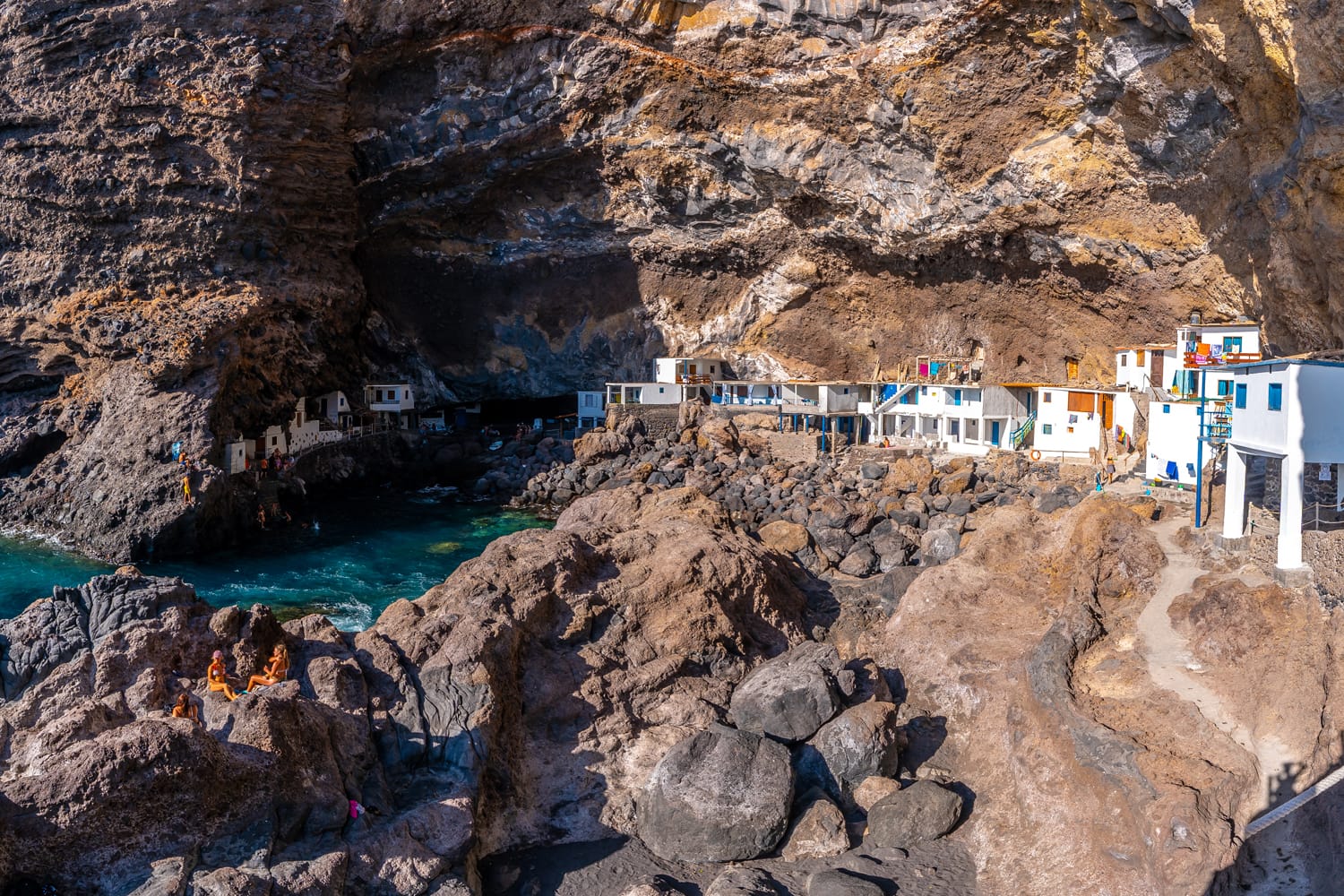
Proís de Candelaria and Cueva Bonita
On the east side of the island sits one of the island’s most unique attractions, Cueva Bonita.
Cueva Bonita is a famous cave that can only be accessed by sea. It is said that in the 17th century, many fishermen sought refuge here during pirate attacks and that the cave saved their lives. Today, this large cave features magical blue waters and is a must-see in La Palma. If you want to visit this spectacular attraction, we recommend a 1.5-hour sea kayaking tour to Cueva Bonita. The tour leaves from the fishermen’s village of Proís de Candelaria, which is a quaint cove where island residents have built homes in the surrounding sea caves. During the excursion, visitors will learn about the history of the area, all the while exploring the cave and cliffsides.
Even if you don’t plan on doing the tour to Cueva Bonita, Proís de Candelaria is still worth a visit!
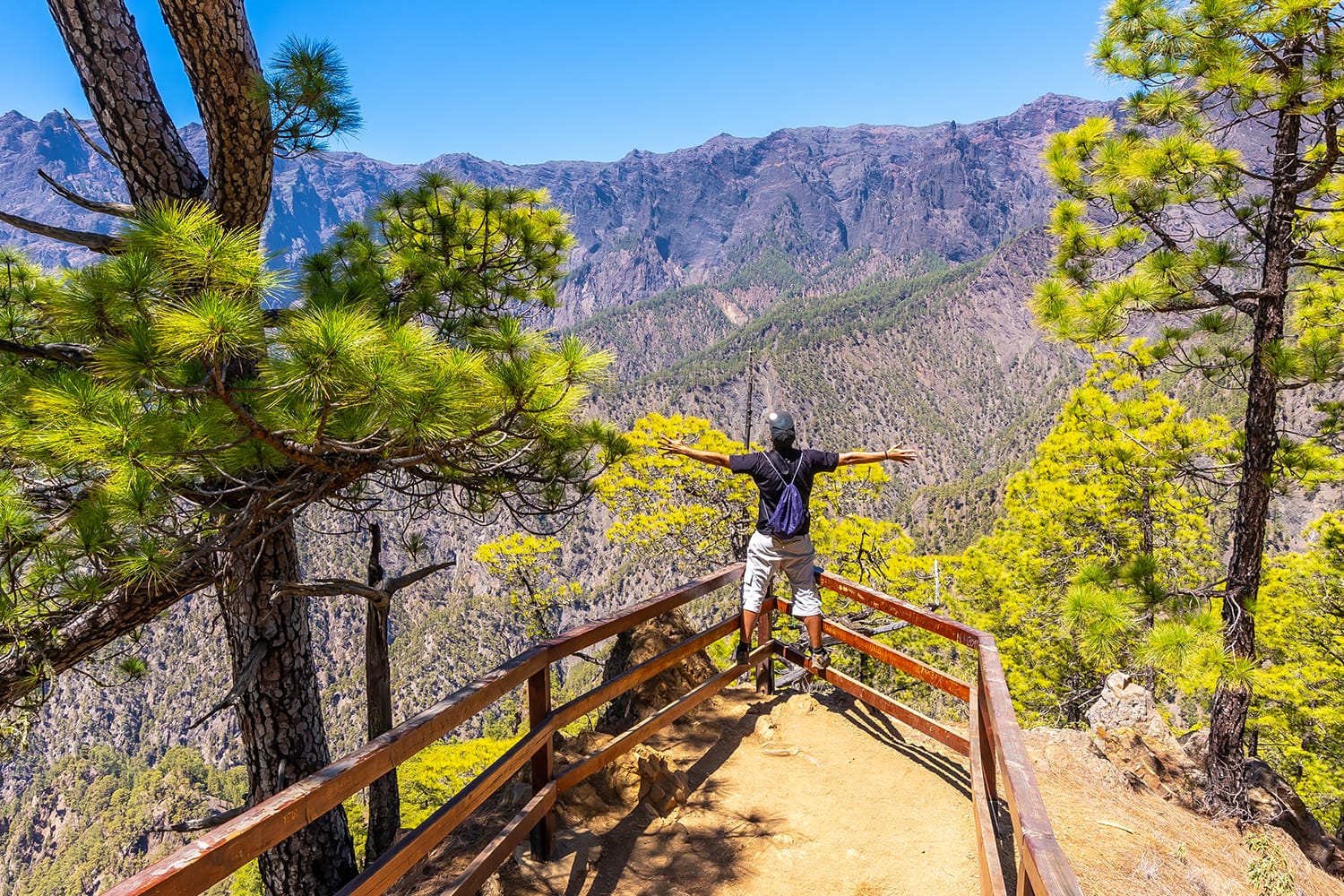
Caldera de Taburiente National Park
Caldera de Taburiente National Park is an incredible natural area located in a crater in the center of the island. The park features incredible waterfalls and mountain peaks, along with plenty of hiking trails that are not to be missed!
One of the most popular hikes is the Cascada de los Colores trail, which takes hikers to one of the most incredible waterfalls in the whole of the Canary Islands. While the entire trail is filled with rewarding views, the waterfall, with its colorful rock wall behind it, definitely sticks out as the best part. Cascada de los Colores trail is an out-and-back trail. We recommend that you park at Parking por la Cascada de Los Colores and order a taxi to Los Brecitos. A cab will cost roughly €51 and can fit up to five people, but this service only runs until about noon. Once you are dropped off, it is about a five to six hour hike to the waterfall and back to the parking lot.
Another popular hike is from Mirador de la Cumbrecita to Mirador Lomo de las Chozas. Both spots offer incredible views. From Mirador Lomo de las Chozas, hikers can continue on a circular route via Mirador de Los Roques or head back the way they came. This circular route takes roughly an hour and is just over three kilometers long. You are required to book parking at Mirador de la Cumbrecita in advance for between 8:30 a.m. and 4 p.m. Hiking to Pico Bejenado is also another popular route.
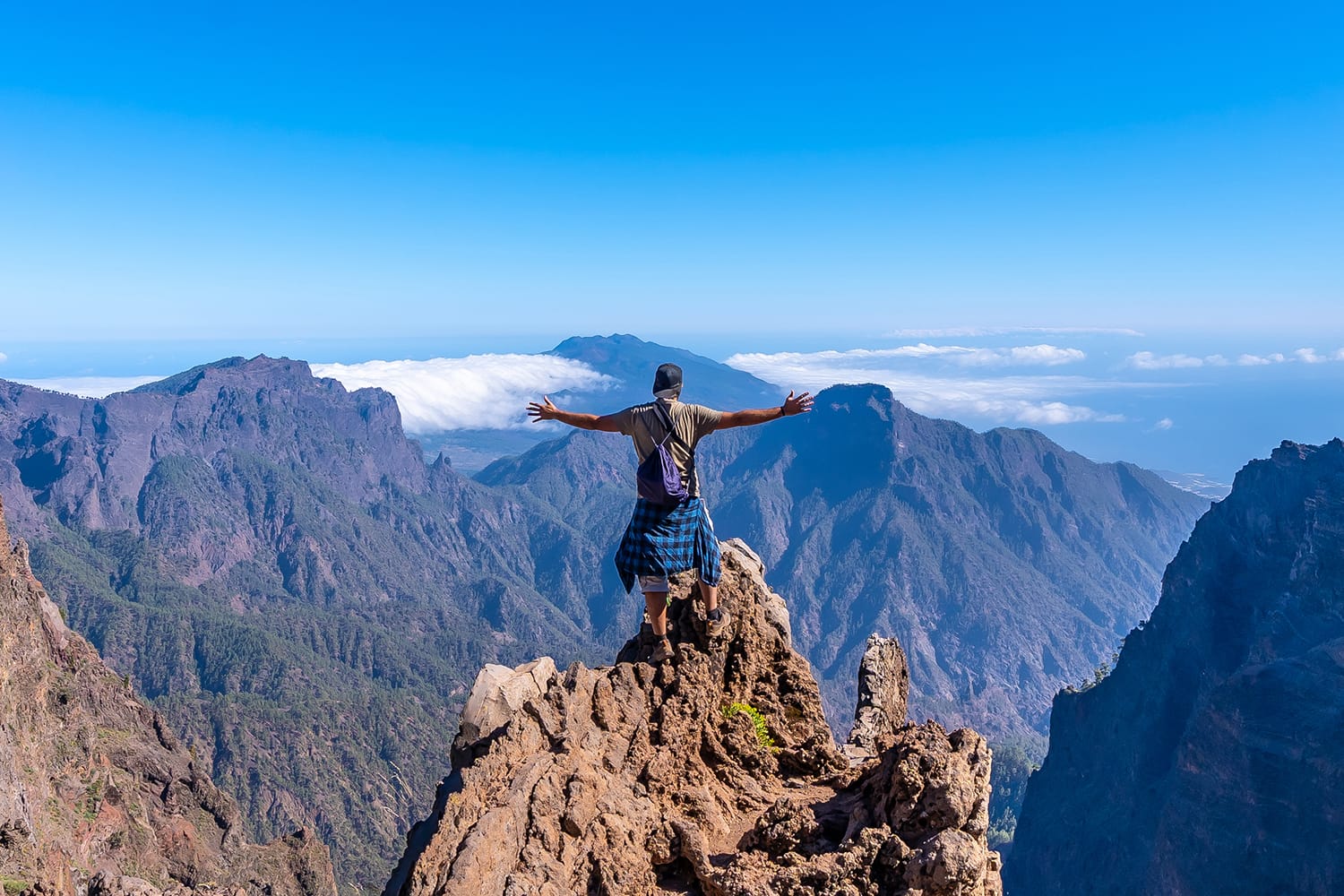
Roque de los Muchachos
If you’re wondering what to do in La Palma that is unique to the island, then consider visiting Roque de los Muchachos, one of the best places in the world for stargazing.
This rocky peak located in Caldera de Taburiente National Park is the highest summit on the island, and it offers visitors incredible panoramic views of the landscape and the national park crater. At night, the heavens open up, and tourists will be blown away by how clear the night sky is. For those at all interested in astronomy, make sure to check out the visitor center and the observatory. The best way to experience the night sky at Roque de los Muchachos is with a tour. We recommend a six-hour stargazing tour. Visitors get to watch the sunset with a glass of wine from the viewpoint, view the stars through the telescope, and learn all about what makes Roque de los Muchachos so special. Transfer to and from the hotel is included.
Another way to experience the mountain peak is with this five-hour trekking tour. Visitors embark on a guided hike along the ancient footpath that used to connect Tijarafe to Santa Cruz de La Palma. Once at the top of Roque de los Muchachos, tourists can take a break and enjoy the views. Other points of interest on the hike include Roberto’s Wall and Pico de La Cruz.
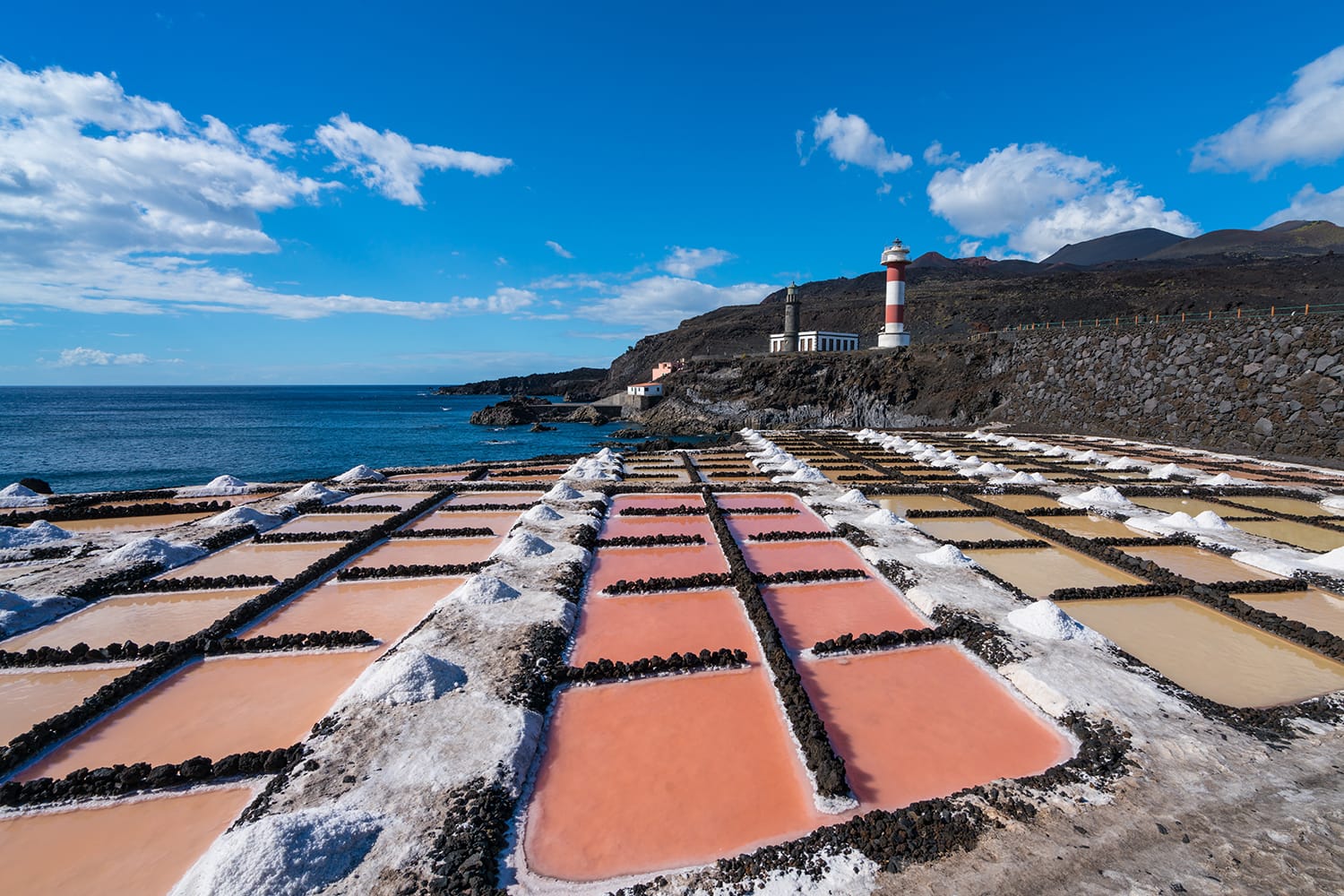
Fuencaliente de la Palma
Fuencaliente de la Palma, the region covering the southern tip of the island, is home to some of the best La Palma attractions.
Visitors can easily spend a day on a mini road trip in the region. We recommend starting off with a visit to Salinas de Fuencaliente. Here, visitors can explore the salt pans inspired by the salt flats in Lanzarote. The shocking contrast of pure white salt against the black volcanic soil is truly breathtaking, and tourists can purchase salt souvenirs to bring back home. Right beside the salt flats is the Lighthouse Fuencaliente, a striking 1980s red-and-white lighthouse perched right beside the old stone lighthouse. After a visit to the salt flats and lighthouse, head to Playa de la Zamora, the most popular beach in the region for an afternoon in the sun and sea. Playa de la Zamora is a gorgeous black sand cove that is also a protected marine reserve. This means there are lots of fish in the water, so make sure to bring your snorkel!
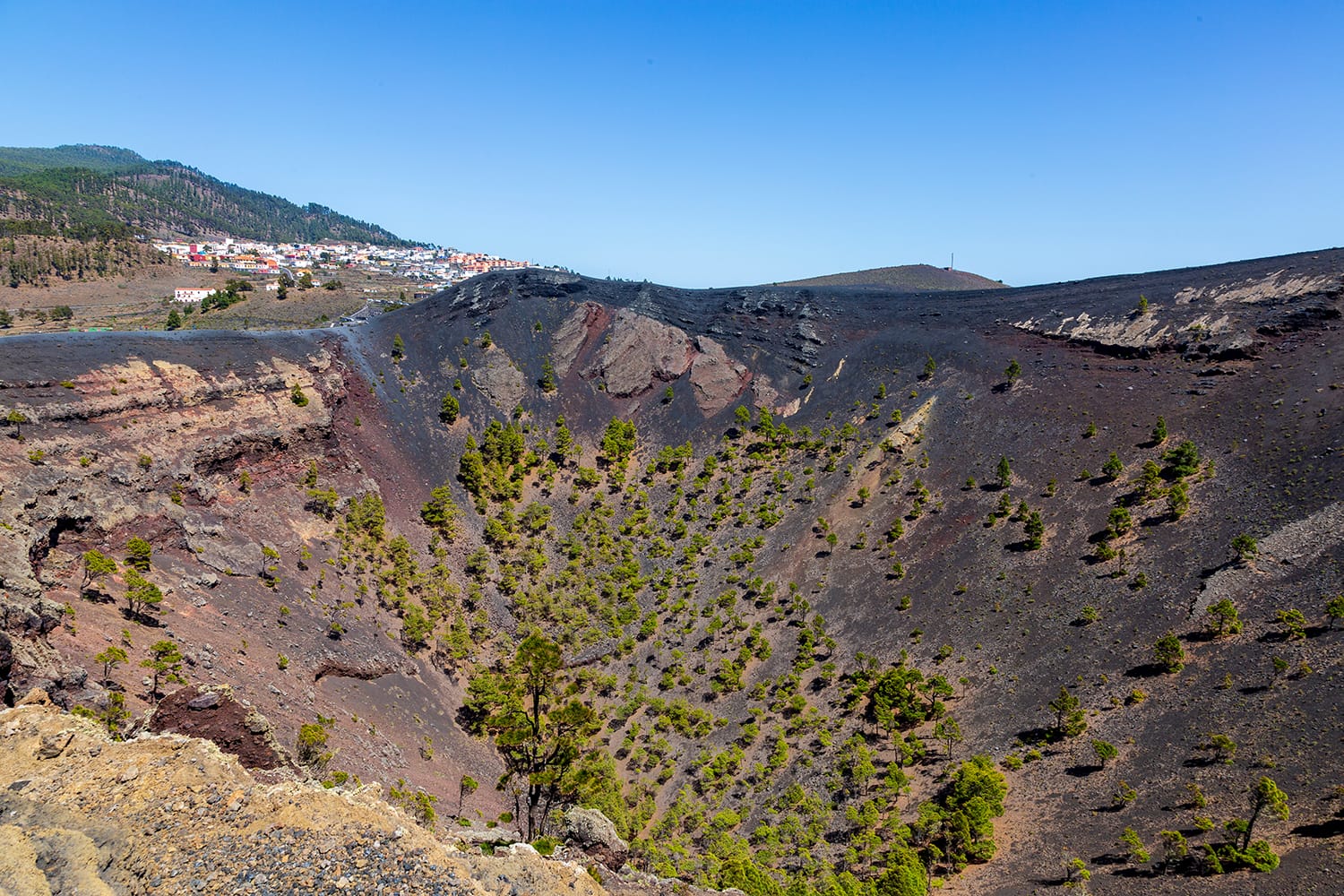
Volcán de San Antonio
The Canary Islands and La Palma are known for their volcanic landscapes, so why not strap on those hiking boots and tick “Hike around a volcano” off your bucket list?
Walking around the rim of Volcán de San Antonio is a fantastic, fun thing to do in La Palma for visitors of all ages. Tourists need to first make their way to the visitor center to get to the trailhead. The visitor center has tons of information on geology and volcanoes in the Canary Islands and around the world.
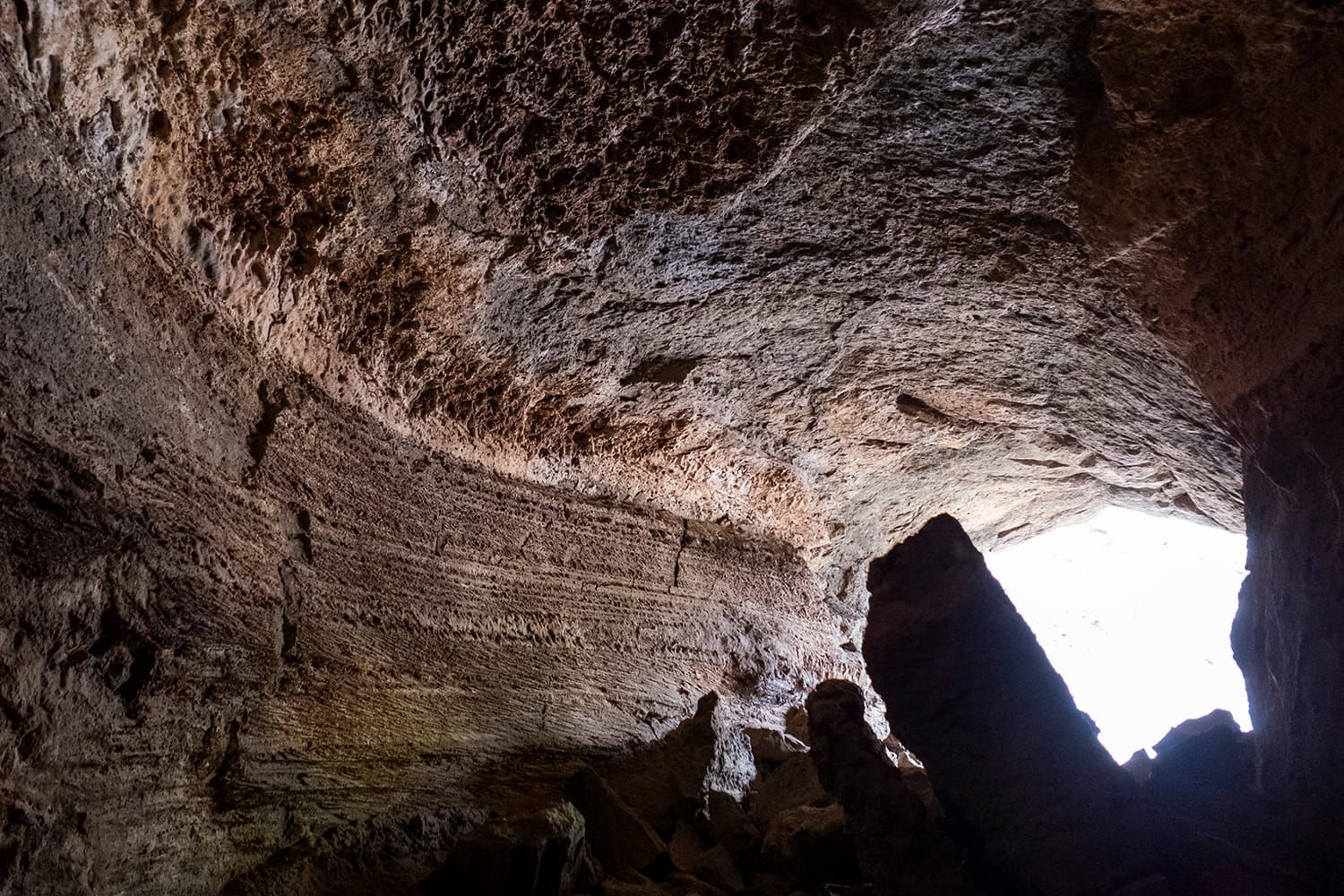
Cueva de Las Palomas
Another fantastic activity in La Palma is cave exploring at Cueva de Las Palomas!
This two-hour volcanic cave tour will take you on a journey through lava fields and into a volcanic cave, where a guide will tell you about the geology of the area. You first meet at the visitor center, where you get geared up with a helmet and meet your expert guide. Then you head out through a 500-meter-long lava tube that was formed after an eruption in 1949. Explore the cave and learn all about the volcanic landscapes on this unique tour.
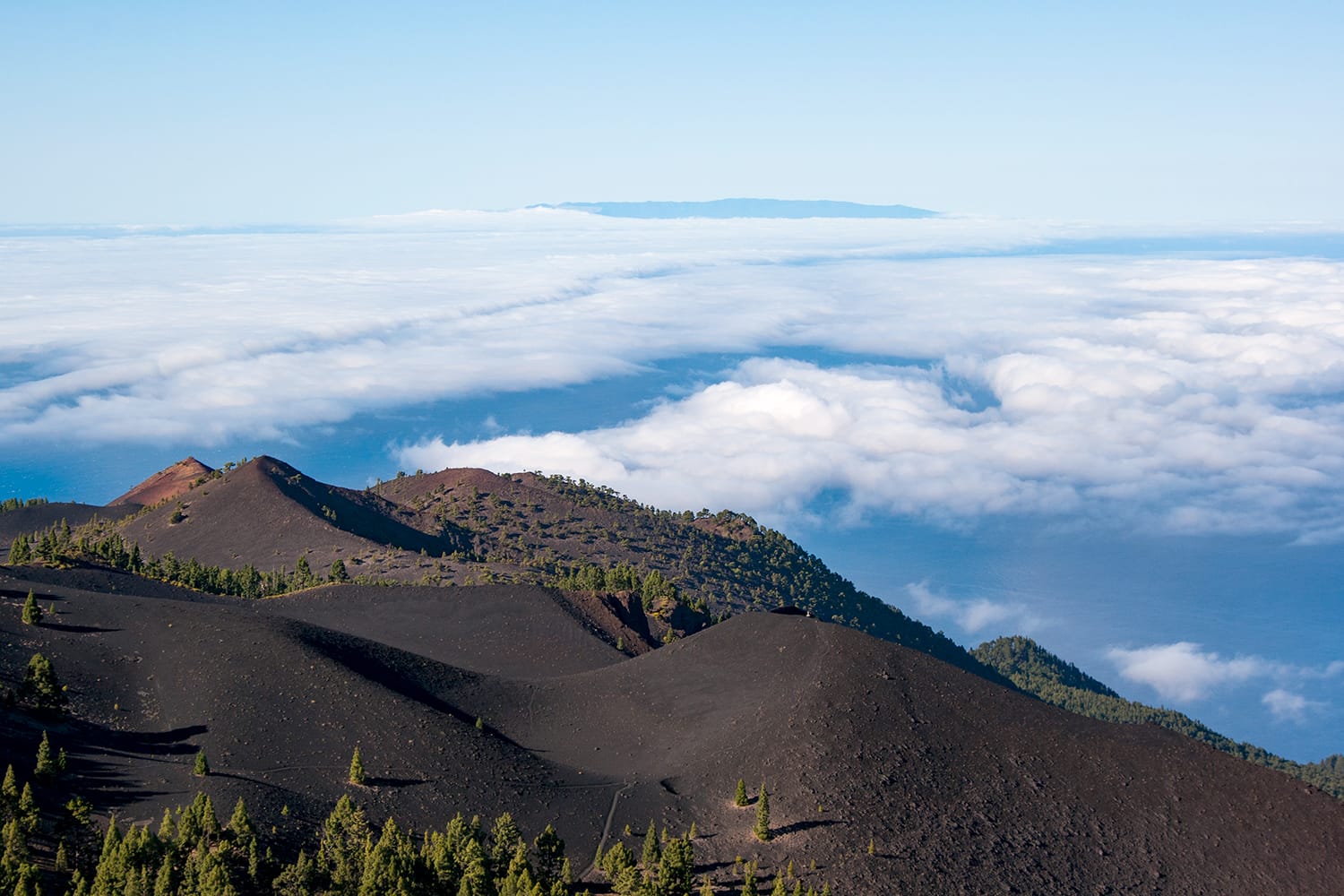
Parque Natural de Cumbre Vieja
One thing that not many people can say they’ve done is see new land being formed after a volcanic eruption. Well, with this 3.5-hour volcano trekking tour in Parque Natural de Cumbre Vieja, you’ll be able to say just that.
Thanks to the recent eruption in 2021 at Parque Natural de Cumbre Vieja, there is new land to be discovered in the area. During the tour, visitors will learn all about the eruption and the landscape and see where the fiery lava carved its path. The tour starts at Tacande volcano, also known as Burnt Mountain. From here, visitors can hike up to the new Cumbre Vieja volcano and walk around the back edge. Tourists should make sure to bring good walking shoes and lots of sunscreen.

Charco Azul and La Fajana
Natural swimming pools are a staple of the Canary Islands and a great free thing to do in La Palma.
While the island is known for its waterfalls, lush nature, and breathtaking beauty, two of the more popular natural attractions are the Charco Azul and La Fajana natural swimming pools. Charco Azul has received international acclaim for its incredible, renovated ocean swimming pool. The pool features calm blue water with stairs leading into the ocean and a waterfall. Charco Azul was renovated to include changing rooms, railings, showers, and parking, but the design was so perfectly executed that it keeps the natural balance of nature, making this a one-of-a-kind spot for a dip. La Fajana is equally as beautiful and features three calm swimming pools. In the larger pools, it is more common to see small fish. Visitors will find ample parking near the pools and a restaurant nearby.
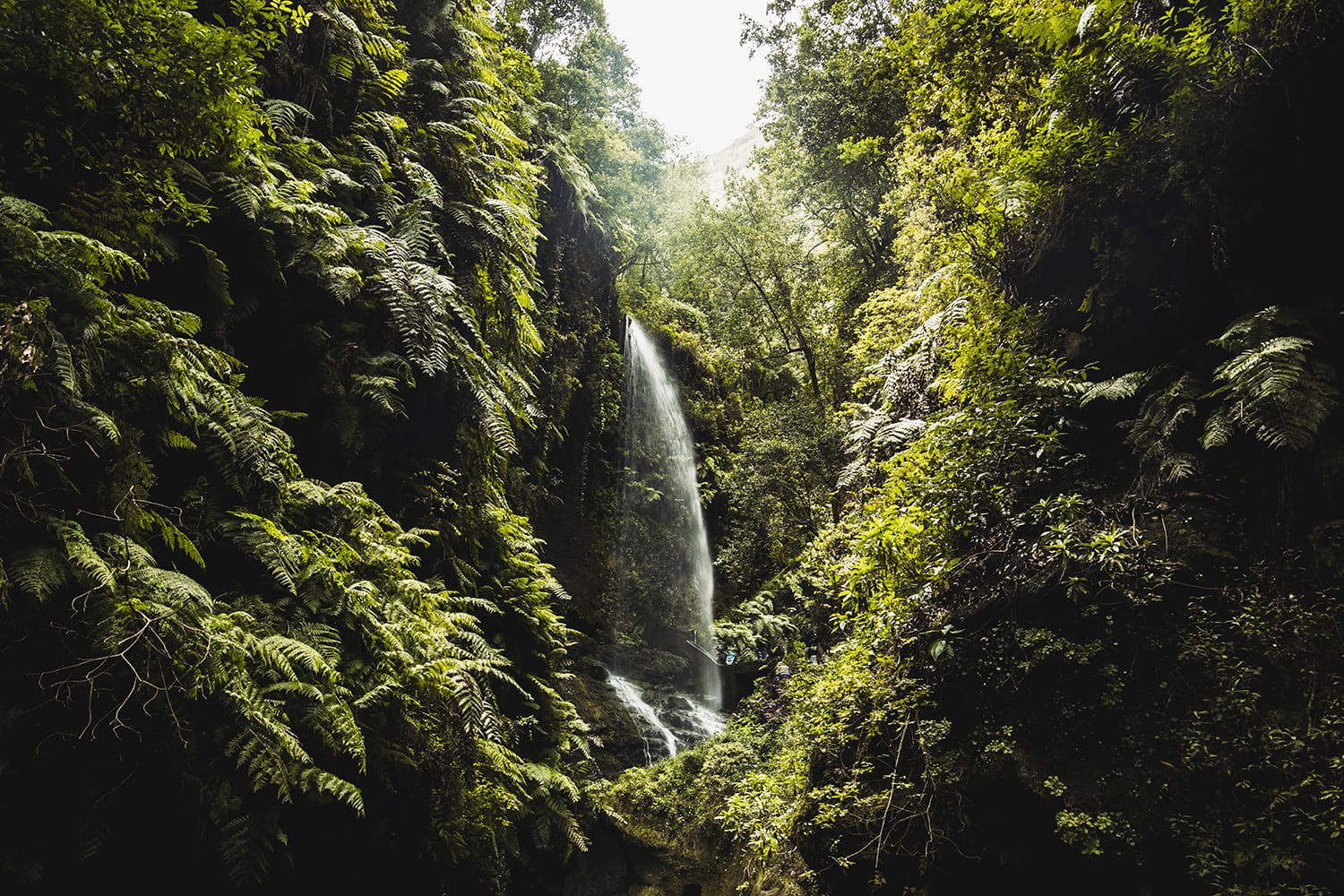
Bosque de Los Tilos
If you are sightseeing in La Palma, make sure to stop in at Bosque de Los Tilos on the northeast side of the island.
This incredible forest was declared a UNESCO Biosphere Reserve and features breathtaking natural landscapes filled with vibrant plants and waterfalls. Speaking of waterfalls, that is one of the main attractions to hike to in the reserve. Many visitors park at the visitor center and hike the 10 minutes to the Cascada de Los Tilos. It is a beautiful sight to see, but there are plenty of other incredible hiking trails in the area, too. We encourage you to go into the visitor center and ask for hiking recommendations.
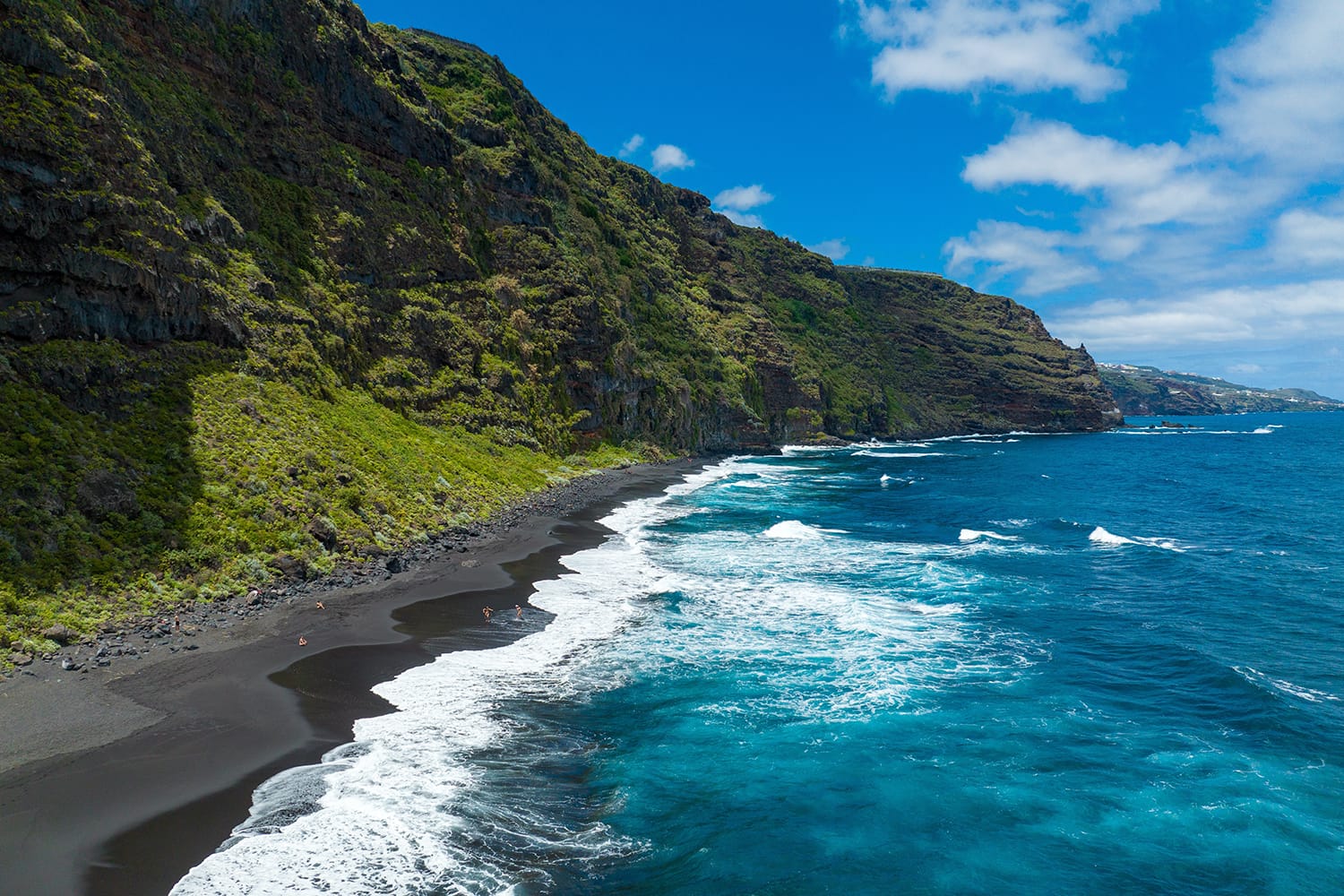
Playa de Nogales
Playa de Nogales is another popular beach in La Palma due to its stunning black sands and excellent waves.
Playa de Nogales is a great place to spend the day lounging in the sun and relaxing while on vacation, and it’s quite popular with surfers and boogie boarders. However, visitors should note that it’s a bit of a steep hike to get down to the beach, entailing parking at Aparcamiento Playa de Nogales and then walking the stairs down to the beach. This is not a good spot for those with mobility disabilities.
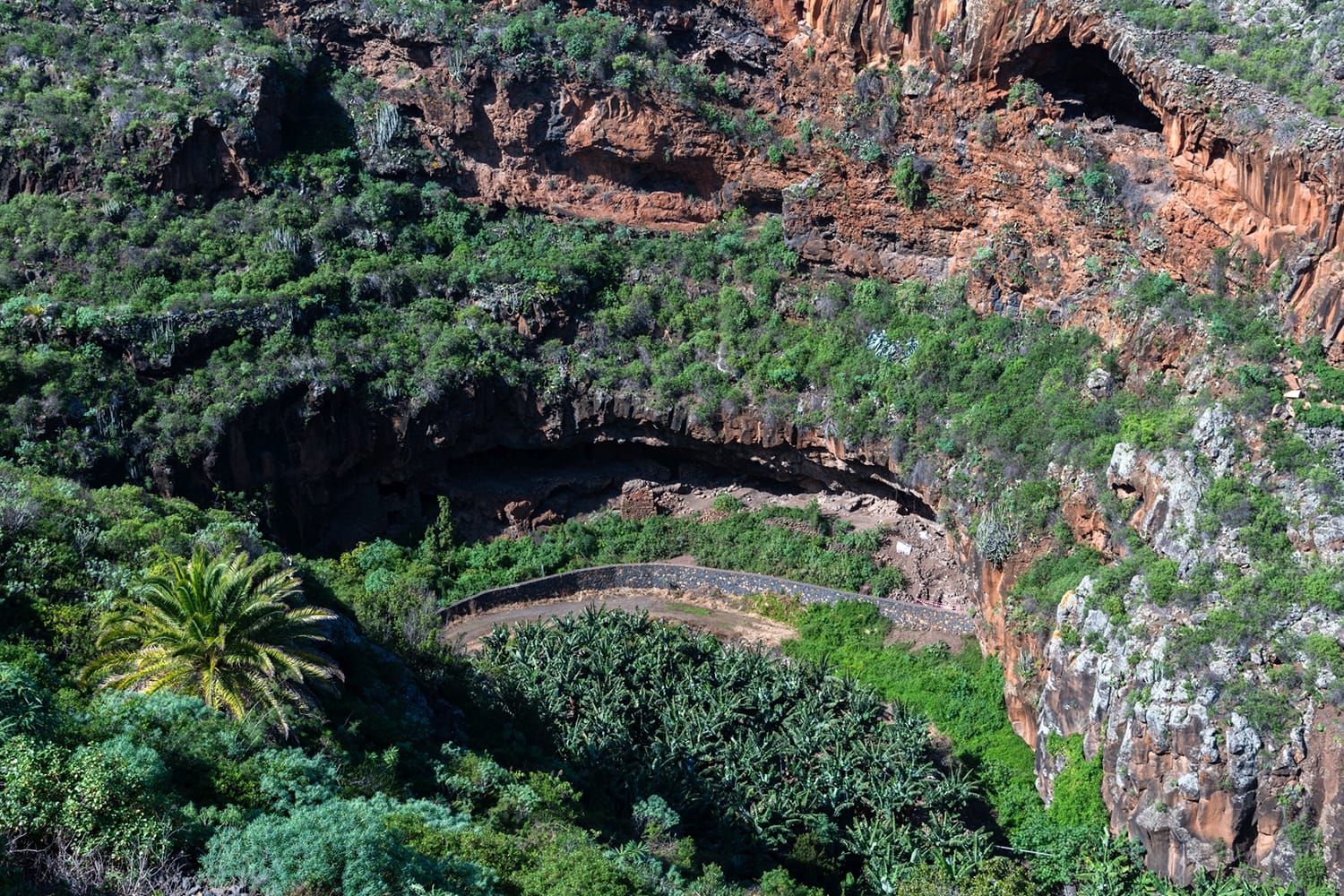
Parque Arqueológico El Tendal
This incredible tourist attraction in La Palma is not to be missed. Parque Arqueológico El Tendal is built around a large cave where Benahoritas (aboriginal islanders) lived for around 1,000 years. Visitors can see ancient artifacts like stone tools, ceramics, and even the bones of domesticated animals. They can also learn about research and excavations done on Tedel Cave and gain a better insight into the religious beliefs and customs of the locals who used to live here.
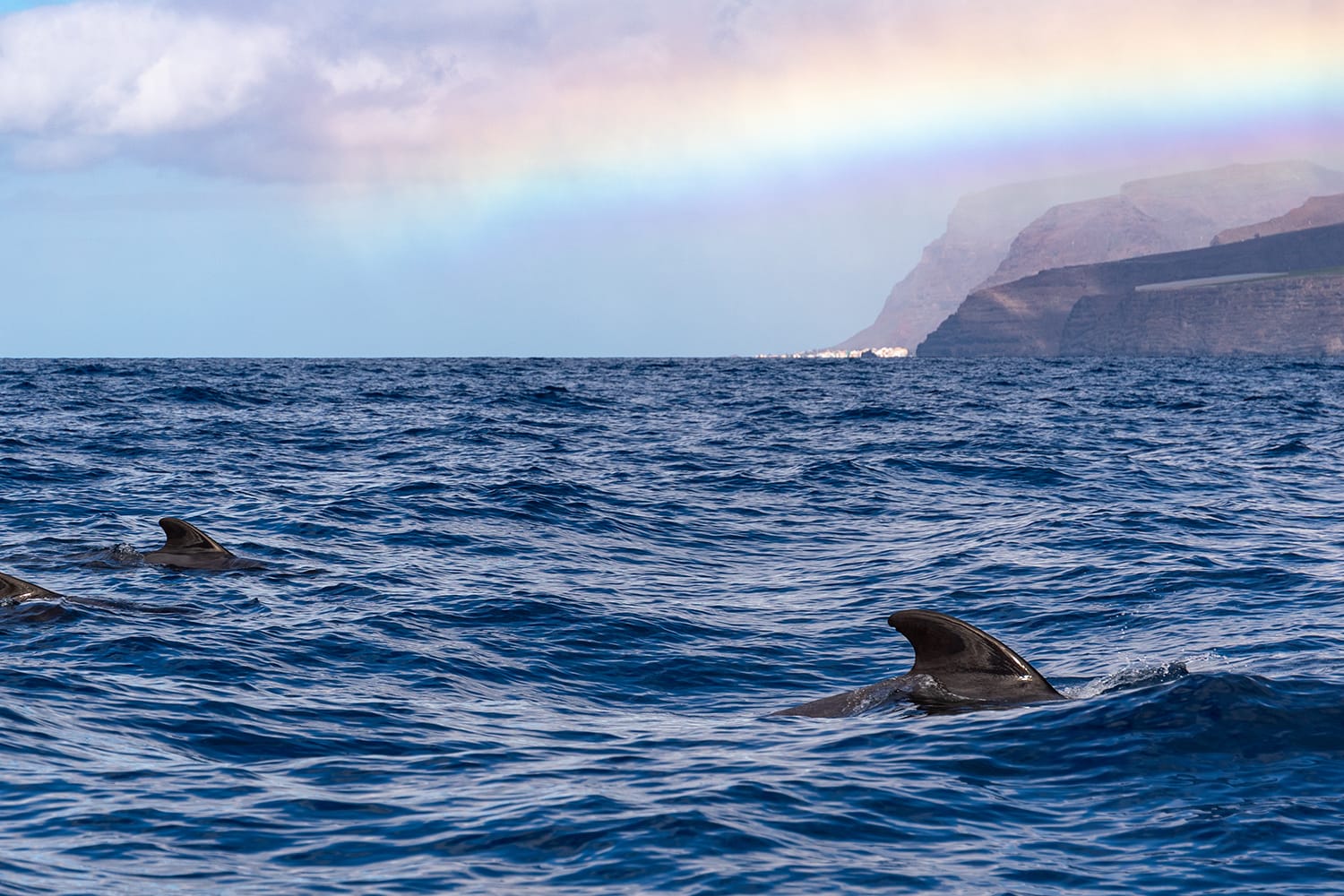
Whale Watching
The waters surrounding the Canary Islands are filled with whales, turtles, dolphins, and other sea creatures, and the best way to see these lively animals is with a whale-watching excursion!
This three-hour dolphin and whale-watching tour is the perfect way to spend an afternoon on the island. The tour sails from Puerto de Tazacorte and cruises along the coast in search of sea creatures. During the tour, guides share information about the surrounding marine environment. It’s possible that there will be an opportunity to swim on the cruise as well, so make sure to pack a bathing suit! The tour also stops at well-known attractions along the coast, such as the new volcanic delta, the Cueva Bonita, and the Poris de Candelaria.
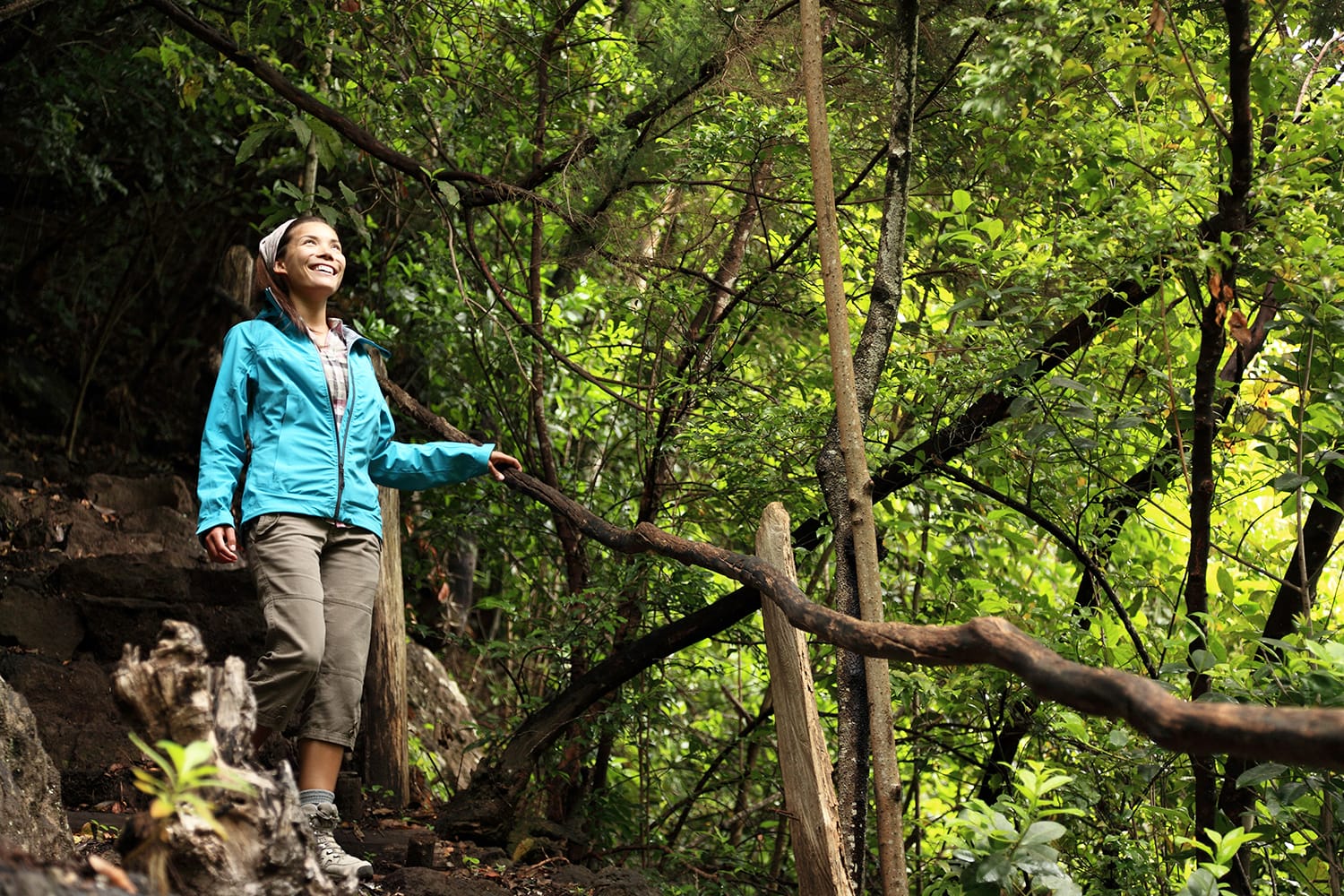
Popular Hiking Trails
As previously mentioned, La Palma boasts a lush natural landscape, and the best way to experience it is with a hike. While we have already mentioned some popular hiking spots, we thought we would add a few more to the list!
Ruta de los Volcanes is a popular point-to-point trail that stretches 17 kilometers. The well-marked route takes hikers through three different regions, including the famous Cumbre Vieja Natural Park. It takes roughly seven hours to complete, and due to its popularity with backpackers and hikers, you’ll most likely run into others on the trail.
Another popular hiking trail is the Cubo de la Galga, which takes visitors through the lush laurel forest area. It is an 8.5 kilometer circular route and takes about four hours to complete. If you’re new to hiking or want to avoid trying to navigate foreign trails, we recommend booking this guided trekking excursion of Cuba de la Galga.
For those looking to hike to a viewpoint, you can’t miss the Pico de la Nieve hike. This incredible summit offers hikers sweeping views of the island and, on a clear day, Tenerife and La Gomera. The trail is roughly a six kilometer circular loop route and takes roughly 2.5 hours to complete.
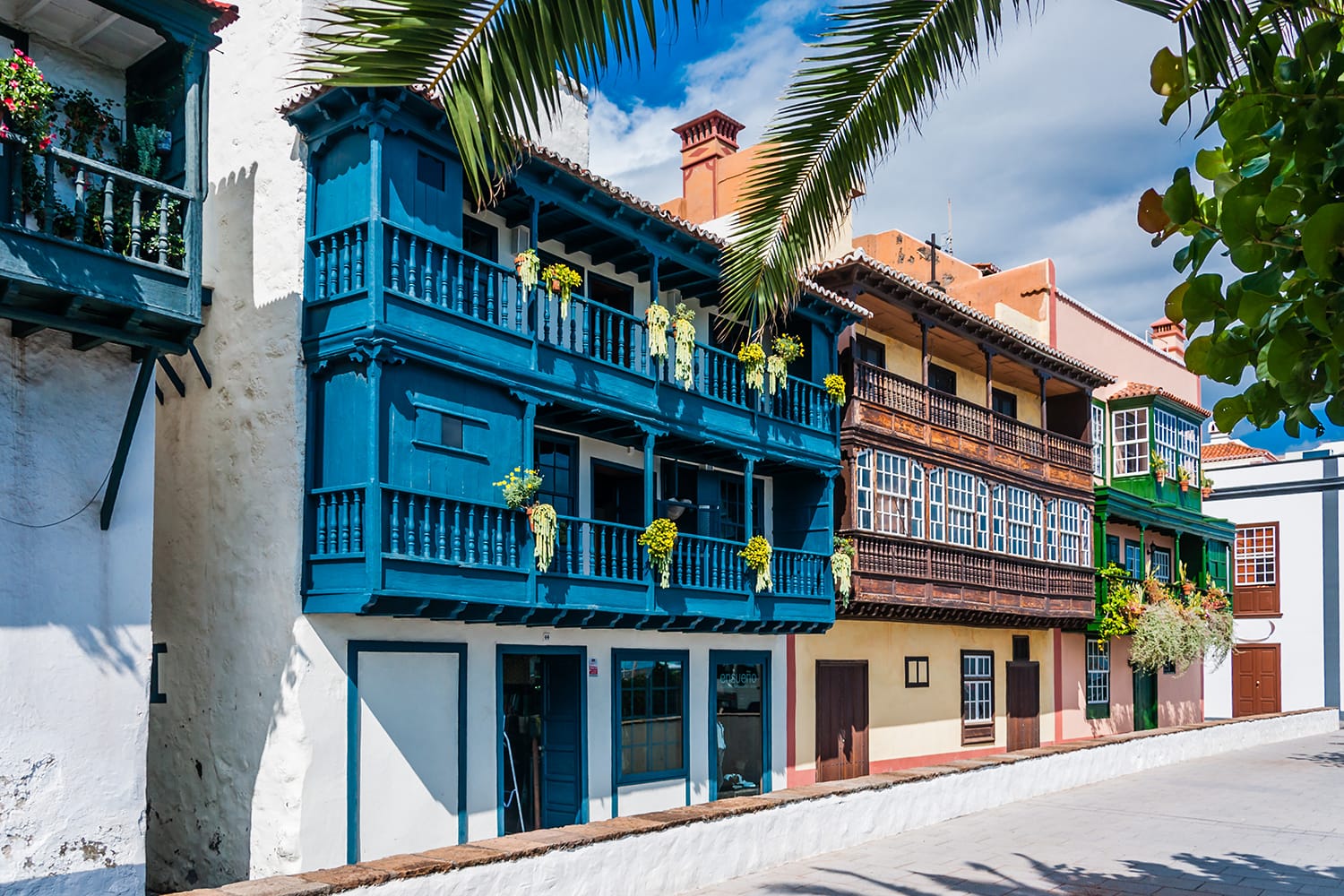
Santa Cruz de La Palma
A visit to La Palma wouldn’t be complete without a visit to the capital city, more specifically, Old Town.
There are plenty of things to see in Old Town, and you can easily spend a day exploring the city. Your first stop should be to Plaza de España and the Parroquia Matriz de El Salvador church. After a wander through the square, make your way to the Museo Naval – Barco de la Virgen, where you can learn about maritime history and tour a replica of one of Christopher Columbus’s ships. Audio guides are also available. Another fantastic and eclectic museum to visit is the Museo Insular de La Palma. Here, you can learn about shipbuilding and the island’s history and view artworks from the Middle Ages to modern contemporary works.
Finish your day off in the city with a sunset stroll down the landmark Balcones de la Avenida Marítima. This colorful residential street is famous for its wooden colonial-style balconies located across the street from Playa de Santa Cruz de La Palma. You can stop in at one of the restaurants and bars for a bite to eat or head to the beach for an evening swim.
That brings our list of the best places on La Palma to an end. We hope that you take advantage of all the incredible attractions the island has to offer and have a memorable vacation in the Canary Islands!
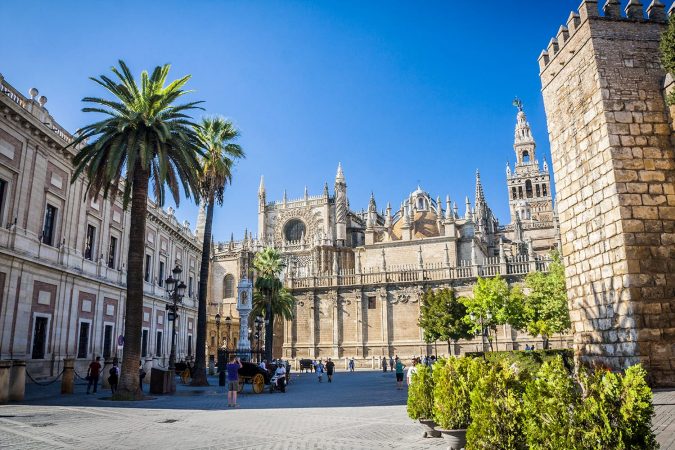

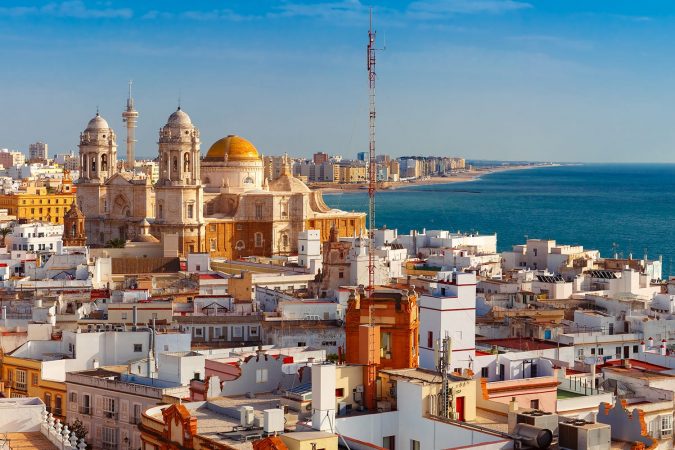
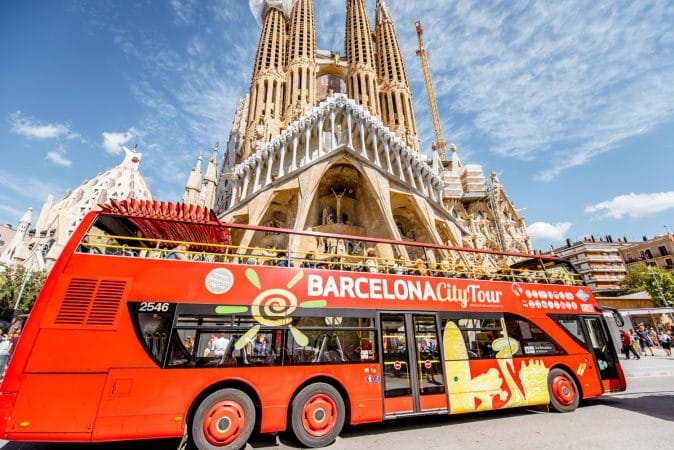
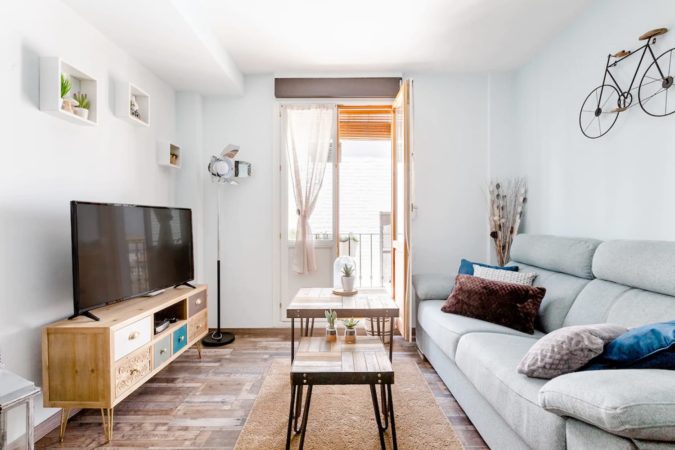


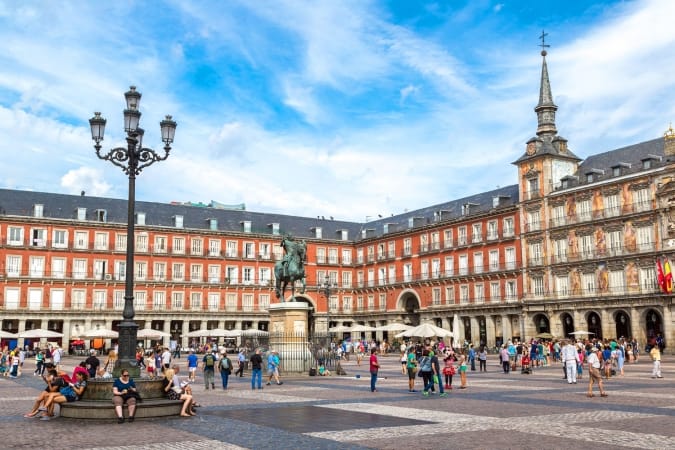
Comments